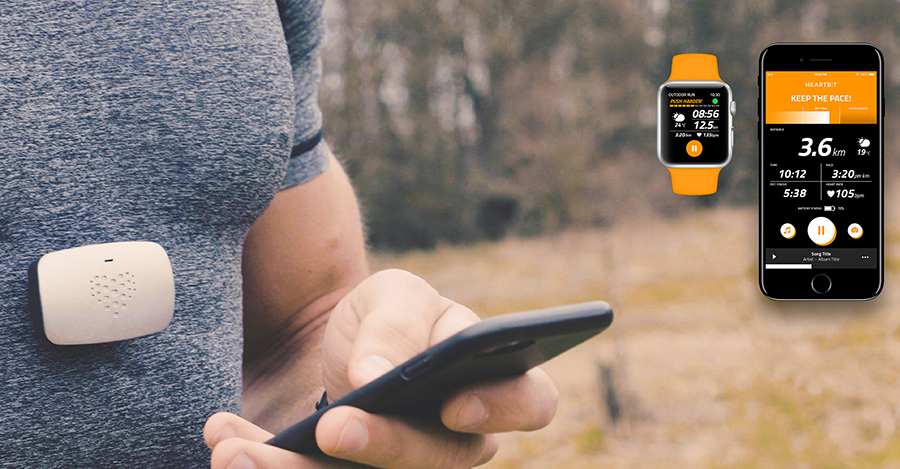While working out, not all of us achieve the same results. Our body responds differently to exercise. With the rising popularity of wearable devices, fitness enthusiasts are using them to learn more about how their body responds to activity.
Related Why the ECG in the New Apple Watch May Not Be So Great After All
Budapest-based startup HeartBit created a wearable device that monitors heart stress and uses this data to develop fitness plans customized to a user’s unique physiology and environment. The company stepped into the cloud to bring the solution to market quickly and cost effectively, reports IBM.
Most gadgets currently available in the market only monitor pulse-rate, but a device that is capable of recording electrocardiogram (ECG) data would take heart monitoring possibilities to a higher level. An ECG device could alert users about warning signs in their heart activity and offer tailored training recommendations.
HeartBit created a wearable device that monitors heart stress and uses this data to develop fitness plans customized to a user’s unique physiology and environment. HeartBit is the world’s first wireless medical grade electrocardiogram (ECG) device that can be assimilated into everyone’s daily living. HeartBit can record ECG signals while the person is resting, sleeping, exercising, and other activities. These helps increase the user’s health safety and also avoid cardiological risks.
Although it should not be used as a medical device, HeartBit can alert about serious health risks and also help detect health conditions like arrhythmia, atrial fibrillation, ischemia and other health issues.

HeartBit stepped into the cloud to bring the solution to market quickly and cost effectively. The company teamed up with IBM to build the infrastructure that will use the IBM cloud to host the accumulated data gathered by the wearable ECG device. Using a range of IBM Watson solutions, the team came up with a solution that accumulates data through the device then sends it via Bluetooth to an app running on a smartwatch or smartphone. The data is then sent to the IBM Cloud for processing and analysis.
Related Easiest Way to Track Your Heart Rate With Wearable Fitness Trackers
Using machine learning tools, the team can create, train and deploy self-learning risk analysis algorithms, which pick up on abnormalities in heart activity. Using data science tools in the cloud, they can turn data into reports that are easy to understand by the users.
“Once a person has been using HeartBit for some time, enough data will be collected to create a personalized training regimen. We also combine ECG readings with weather data to suggest workouts that maximize users’ potential without stressing their hearts,” writes George Kozmann, CEO of Heartbeat in his article.
Once launched, Heartbit expects significant sales, and IMB removes barriers to expansion, helping the company to take HeartBit worldwide, said the company.












